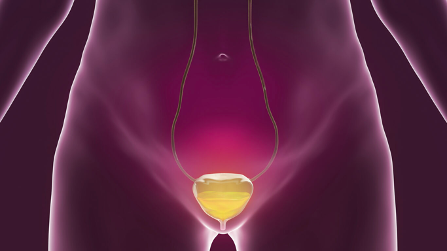
For people with Spina Bifida, bladder management can be one of the most challenging parts of their condition. With varying levels of paralysis and sensory impairment involved, taking control of the bladder can become quite complex and difficult.
Thankfully, solutions such as intermittent catheterization (IC) are now available and able to help people with Spina Bifida regain control of their bladder management routines. Keep reading to learn more about intermittent catheterization and Spina Bifida!
Making Bladder Management Easier: Intermittent Catheterization
Figure 1: Click the image to learn more about Evie’s journey with Spina Bifida
Self-managed intermittent catheterization (IC) is a gold standard therapy for managing the bladder. It improves health-related quality of life, reduces the risk of urinary tract infections, and preserves kidney function. For example, a new study has found that intermittent catheterization prevents scar formation on the kidneys.
As you may already know, people with Spina Bifida can be at a higher risk of contracting urinary tract infections due to incomplete emptying of the bladder. Thankfully, by using intermittent catheterization (IC), these individuals can completely empty their bladder and reduce the risk of leaving behind urine that can harbor bacteria.
Improving Bladder Function with Intermittent Catheterization (IC)

IC is also very helpful in improving overall bladder function for people with Spina Bifida. This is because intermittent catheterization can help reduce how frequently bladder spasms occur. It can also increase the bladder’s capacity, leading to improved urinary continence and lower episodes of incontinence.
As you may have guessed, these improvements can lead to many positive changes in the lives of individuals with Spina Bifida. Being able to perform IC on their own gives people much more control over their bladder function and can drastically improve their quality of life. Having more control can also lead to improved social participation, as people have less fear of incontinence issues or of needing assistance in the bathroom.
Interested in trying intermittent catheterization yourself? Click here to request a free catheter sample today. A team of experts will guide you through the process.
Important Things to Look for in a Catheter

For people with Spina Bifida, hydrophilic single-use catheters can be a good solution for reducing the risk of complications. This is because hydrophilic coating has been proven to reduce the risk of urethral trauma and Urinary Tract Infections (UTI´s) . The coating stays slippery both at insertion and withdrawal to protect the urethra as much as possible.
Catheters should also be clinically proven to minimize risks to urethral health over the long run. Finally, a great catheter has the perfect blend of flexibility and stiffness to account for both comfort and IC success. Both are needed to ensure the catheter can maneuver through the urethra easily while avoiding pain or bleeding.
In addition to the above, make sure to address the following factors when choosing a catheter:
- Length & Width: Important for complete emptying and avoiding infections.
- Handling Aid: Does the catheter ensure a steady grip and a non-touch technique to minimize bacterial contamination when catheterizing?
- Lifestyle Fit: Is the catheter discrete and easy to use for your lifestyle?
What is Osmolality? Why Does it Matter?
Osmolality is the concentration of dissolved salt particles in urine. Catheters should have a coating which matches the natural osmolality levels of urine to reduce friction and make the catheterization process as smooth as possible.

Interested in trying intermittent catheterization yourself? Click here to request a free catheter sample today. A team of experts will guide you through the process.
Additional Resources
To learn more about Spina Bifida and bladder management, take a look at the below resources:
